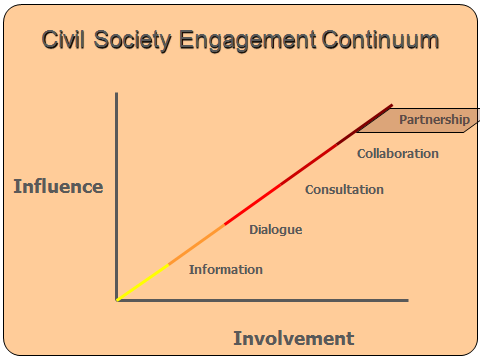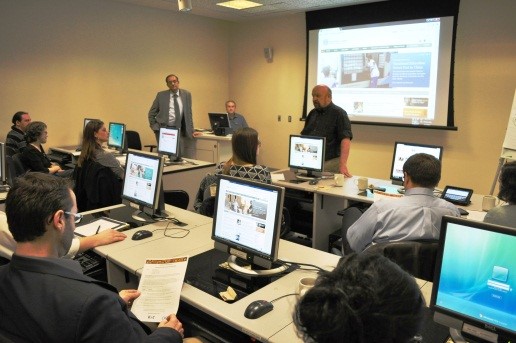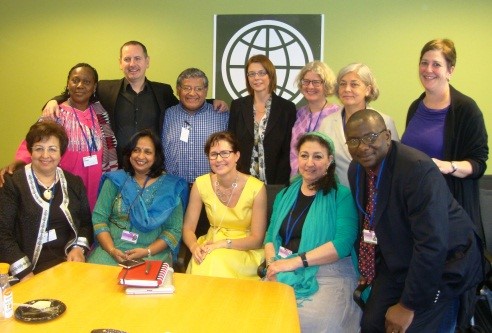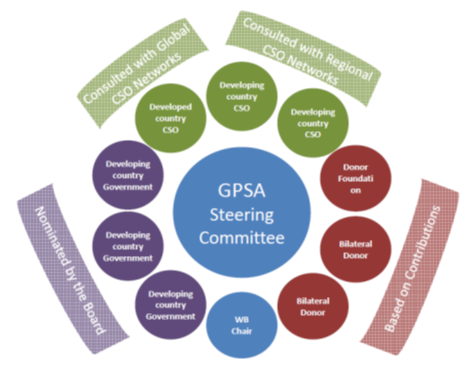 As can be expected, this last step on the civil society engagement continuum has been the most difficult for the World Bank to achieve over the years. This is because institutional partnerships necessarily involve common goals, shared decision making, and even long term relations. While there are a number of examples of Bank – CSO partnerships in the areas of education, health, and environment, many of these are still ad hoc and pilot in nature. Nonetheless, as the latest edition of the World Bank–Civil Society Engagement Review of Fiscal Years 2010–12 shows, this period represented a watershed in terms of promoting institutional partnerships by providing CSOs with a seat at the decision making table in several funding
As can be expected, this last step on the civil society engagement continuum has been the most difficult for the World Bank to achieve over the years. This is because institutional partnerships necessarily involve common goals, shared decision making, and even long term relations. While there are a number of examples of Bank – CSO partnerships in the areas of education, health, and environment, many of these are still ad hoc and pilot in nature. Nonetheless, as the latest edition of the World Bank–Civil Society Engagement Review of Fiscal Years 2010–12 shows, this period represented a watershed in terms of promoting institutional partnerships by providing CSOs with a seat at the decision making table in several funding  mechanisms.
mechanisms.
During the past three years, the Bank did enter into new partnerships with CSOs on number of fronts. In the area of access to information and open data, for instance, the Bank held joint training workshops on geo-mapping and collaborated on data collection on several programs such as Open Aid Partnership (see photo). In the environmental area, the Bank launched the Global Partnership for Oceans (GPO) in 2012 which includes more than 100 governments, CSOs, and business partners. To date, some 27 CSOs are supporting the initiative, including Conservation International, the Environmental Defense Fund, and World Wildlife Fund. The Bank also established partnerships with Foundations in a number of areas such as health and education, support to fragile states, and gender mainstreaming.
It was in the area of governance, however, that the most important advances were achieved in the area of institutional partnerships. The Bank has incorporated CSOs as advisors in a number of funding mechanisms over the years. The Global Environment Facility (GEF), for instance, has 30 CSO and indigenous people’s observers, who participate in semiannual Council Meetings. The Climate Investment Funds (CIFs), have 19 CSO representatives (chosen competitively through online voting), who serve as “active observers” on its five committees and subcommittees. The World Bank–Civil Society HNP Consultative Group includes 18 CSO leaders, who advise the Bank on its health, nutrition, and population agenda (see photo). Four civil society representatives sit on the 19-member Board of Directors of the Global Partnership for Education (GPE).
 Between 2010 and 2012, however, CSOs were invited for the first time to serve in a decision making capacity in several new large funding mechanisms managed by the bank. The first was the Global Agriculture and Food Security Program (GAFSP), which has three CSO representatives (from Africa, Asia, and Europe) on the steering committee. Established in April 2010 to promote food security in low-income countries, it is governed by a 26-member steering committee composed of government, donor agency, and CSO representatives which has allocated over $900 million dollars to support food security projects worldwide.
Between 2010 and 2012, however, CSOs were invited for the first time to serve in a decision making capacity in several new large funding mechanisms managed by the bank. The first was the Global Agriculture and Food Security Program (GAFSP), which has three CSO representatives (from Africa, Asia, and Europe) on the steering committee. Established in April 2010 to promote food security in low-income countries, it is governed by a 26-member steering committee composed of government, donor agency, and CSO representatives which has allocated over $900 million dollars to support food security projects worldwide.
 The most recent and promising case of CSOs being offered a deliberative role is the Global Partnership for Social Accountability (GPSA). CSOs have 3 seats (1 from a developed country and 2 from developing countries) on its 10-member steering committee, the same number allocated to governments and donor agency representatives (see diagram). The CSOs have the same voice as government and donor agency representatives to set overall policy direction, make budget allocations, and select projects for funding.
The most recent and promising case of CSOs being offered a deliberative role is the Global Partnership for Social Accountability (GPSA). CSOs have 3 seats (1 from a developed country and 2 from developing countries) on its 10-member steering committee, the same number allocated to governments and donor agency representatives (see diagram). The CSOs have the same voice as government and donor agency representatives to set overall policy direction, make budget allocations, and select projects for funding.
For a copy of the Civil Society Review full report and copies of the Executive Summary in six languages (Arabic, Chinese, English, French, Russian, and Spanish) please visit the civil society engagement website.
